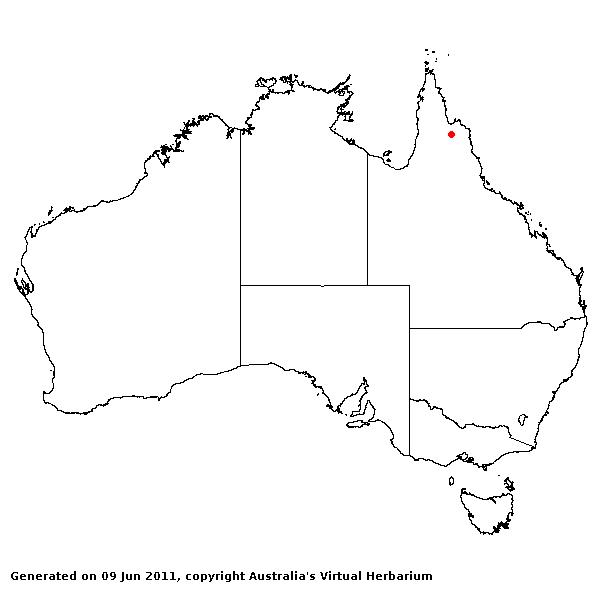Thaumastochloa sp. A (Morehead R., Clarkson 8086)
Classification. (GPWG 2001) : Subfamily
Panicoideae. Andropogoneae.
Key references
(books and floras): [2002] D.Sharp & B.K.Simon, AusGrass, Grasses of
Australia (as T. sp. A).
Habit. Annual.
Culms geniculately ascending, 15–55 cm tall, 8–12 -noded. Mid-culm nodes
pubescent. Lateral branches sparsely branched. Leaf-sheaths hairy. Ligule a
fringed membrane, a ciliolate membrane, 0.2 mm long. Leaf-blades flat or
involute, 2–3.5 cm long, 1–1.8 mm wide. Leaf-blade surface indumented.
Inflorescence.
Inflorescence solid, a rame (spicate). Rhachis fragile but the lowest internode
fused to peduncle.
Spikelets.
Spikelets sessile, 1 in the cluster. Companion spikelets pedicelled, 1 in the
cluster. Companion spikelets represented by barren pedicels. Apical sterile
spikelets rudimentary. Fertile spikelets 2-flowered, the lower floret barren
(rarely male), the upper fertile, comprising 1 fertile floret(s).
Glumes. Glumes
dissimilar. Lower glume oblong, indurate, keeled, 2-keeled, 7 -nerved (very
faintly). Upper glume elliptic, herbaceous, without keels, 5 -nerved (faintly).
Florets. Basal sterile florets 1, barren, without significant palea.
Lemma of lower sterile floret hyaline.
Fertile lemma without
keel, 2 -nerved. Grain 1.2 mm long (young).
Continental
Distribution: Australasia.
Australian
Distribution: Queensland.
Queensland:
Cook.


